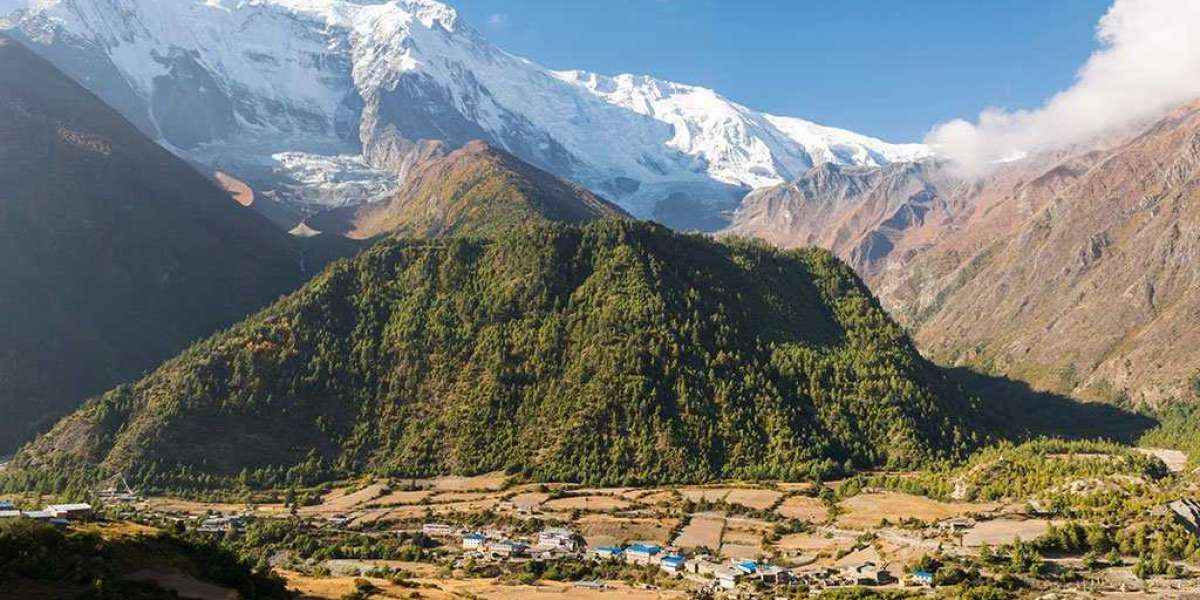The Manaslu Circuit Trek is renowned not only for its stunning mountain vistas and rich cultural experiences but also for its diverse and unique flora and fauna. This captivating trek takes trekkers through various ecosystems, ranging from subtropical valleys to alpine meadows, making it one of the most biodiverse areas in Nepal. Whether you are an avid nature lover or simply someone who appreciates the beauty of the natural world, exploring the unique biodiversity of the Manaslu region can be a highlight of your journey with Ace the Himalaya.
The Ecosystems of the Manaslu Circuit
The Manaslu Circuit provides trekkers with a chance to experience diverse ecosystems, each with its own distinct flora and fauna. The trek begins in subtropical forests rich in oak, rhododendron, and pine trees. As the trail ascends, the landscape transitions into temperate and alpine ecosystems, characterized by a dramatic shift in plant and animal life. This varied terrain creates habitats suitable for a wide range of species while allowing trekkers to experience remarkable changes in biodiversity throughout their journey.
Flora of the Lower Altitudes
In the initial stages of the trek, trekkers find themselves surrounded by lush greenery and vibrant flowers, particularly the iconic rhododendrons. These are not only Nepal's national flower, but they are also visible in numerous colors, including red, pink, and white, carpeting the landscapes along the trail during springtime. Additionally, other flowering plants such as magnolias and various herbs thrive in the lower altitudes, contributing to the region's rich botanical diversity. The subtropical forests are also home to various ferns and shrubs, making it a paradise for botanists and nature enthusiasts alike.
Unique Flora at High Altitudes
As trekkers ascend to higher altitudes, the flora begins to change dramatically. At these elevations, the landscape transforms into rocky terrains and alpine meadows that host an entirely different set of plant species. Unique flora like the blue poppy, which is the national flower of Bhutan, can be seen stiking in its brilliance against the rugged backdrop. The region also hosts a variety of medicinal plants with historical significance, such as juniper and various species of high-altitude herbs that have been used in traditional medicine. This shift in flora not only represents the adaptability of plant life but also offers trekkers a fascinating insight into the resilience of nature.
Fauna of the Manaslu Region
The wildlife along the Manaslu Circuit Trek is equally captivating, with an array of both common and rare species. The region is home to over 200 species of birds, making it a haven for birdwatchers. Some of the notable bird species found here include the majestic Himalayan griffon, the colorful lammergeyer (vulture), and various species of pheasants. As trekkers navigate through the landscapes, the melodic calls of these birds often accompany their journey, creating a soothing atmosphere amidst the natural beauty.
Mammals of the Manaslu Circuit
Among the remarkable mammal species inhabiting the region are the elusive red panda, snow leopards, and Himalayan tahr. While spotting these rare animals can be a challenge due to their secretive nature, the thrill of potentially encountering such creatures adds a sense of excitement to the trek. The rich biodiversity of mammals is a testament to the region's ecological significance and the importance of conservation efforts. Local guides from Ace the Himalaya are knowledgeable about wildlife spotting; their expertise can enhance the experience, allowing trekkers to appreciate the flora and fauna even more fully.
Conservation Efforts and the Importance of Biodiversity
The unique flora and fauna of the Manaslu Circuit are not only stunning but also play a vital role in the ecosystem. They contribute to the health of the environment and the livelihoods of local communities. However, like many natural habitats, the Manaslu region faces threats from climate change, deforestation, and increased tourism pressure. Ace the Himalaya actively promotes responsible trekking practices to minimize the impact on the environment, highlighting the importance of preserving this rich biodiversity for future generations. Through education and awareness, both trekkers and locals can become stewards of the land, ensuring its protection and longevity.
Engaging with Nature on the Trek
Engaging with the unique flora and fauna during the Manaslu Circuit Trek is an experience that enriches the journey. Trekking with guides from Ace the Himalaya allows participants to learn about the ecological significance of the region and to appreciate the delicate balance that exists within these environments. This interaction fosters a deeper understanding of nature and emphasizes the importance of conservation. Many trekkers find that observing the natural world, from the smallest flowers to the majestic mountains, adds a profound sense of awe and gratitude to their adventure.












